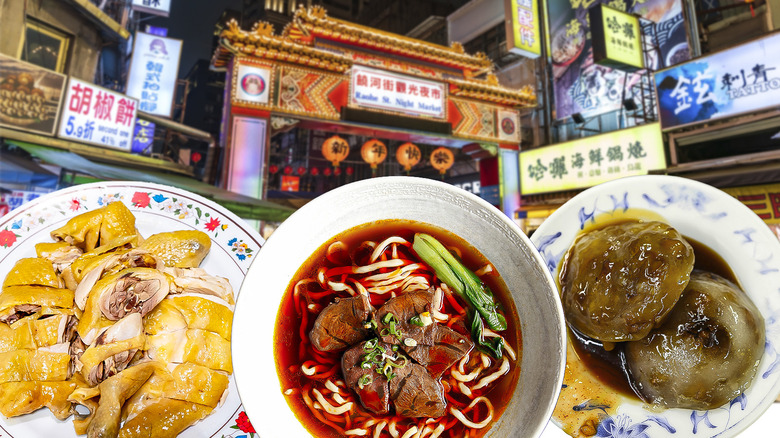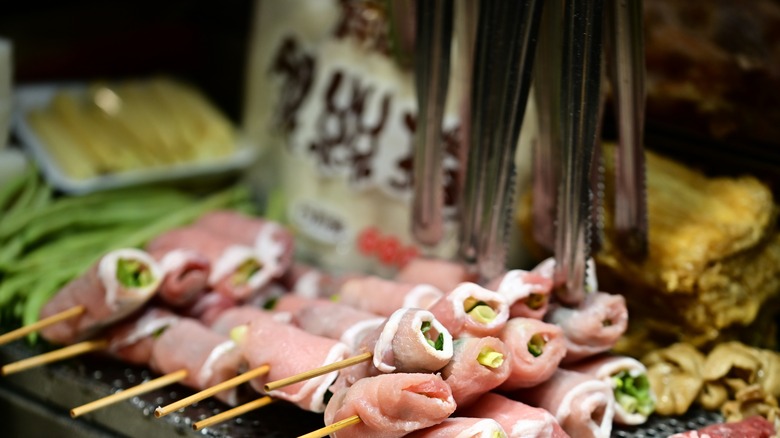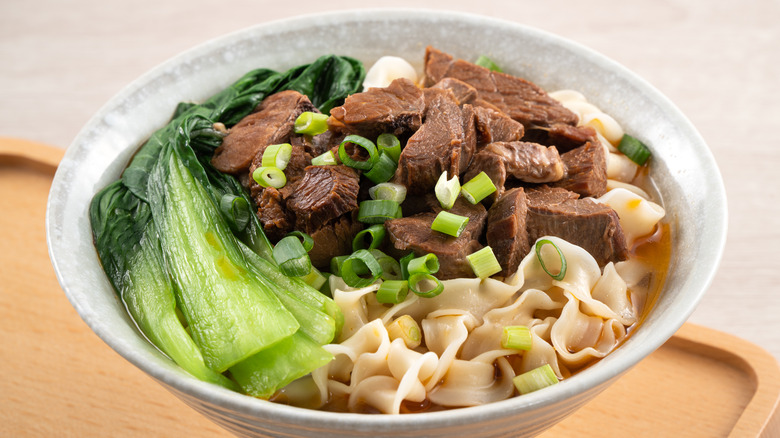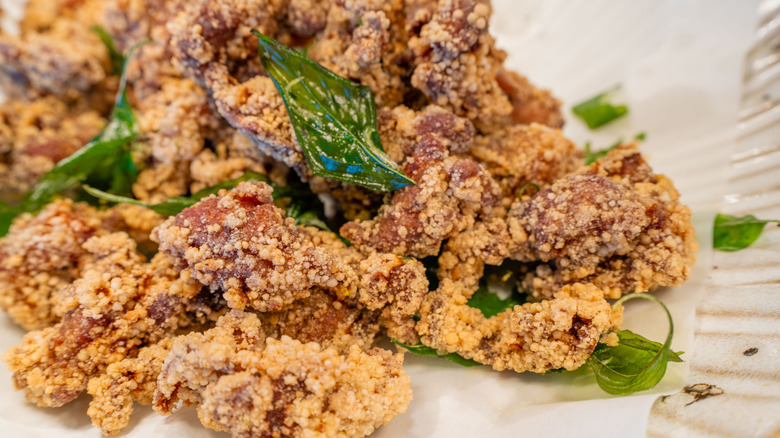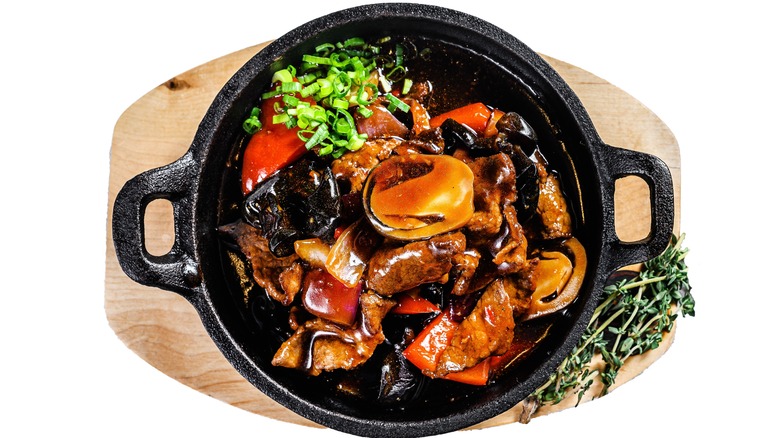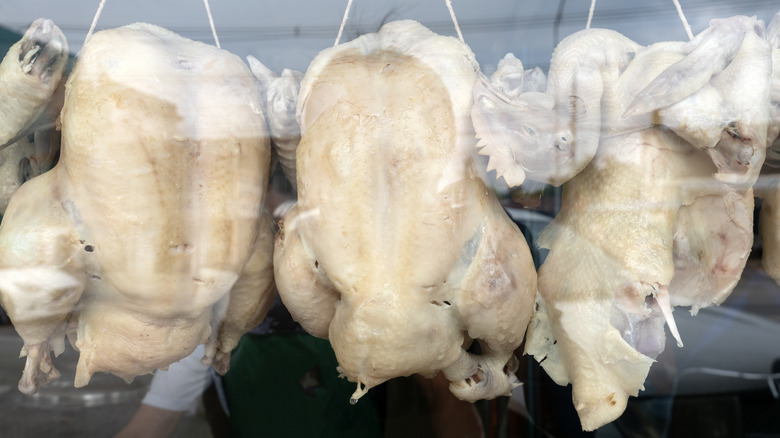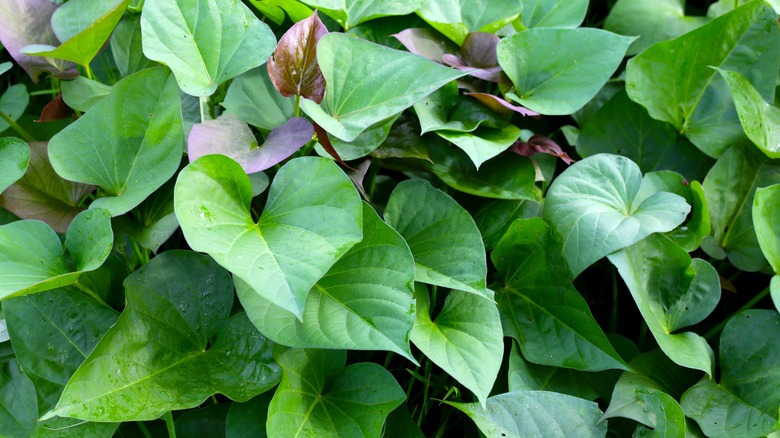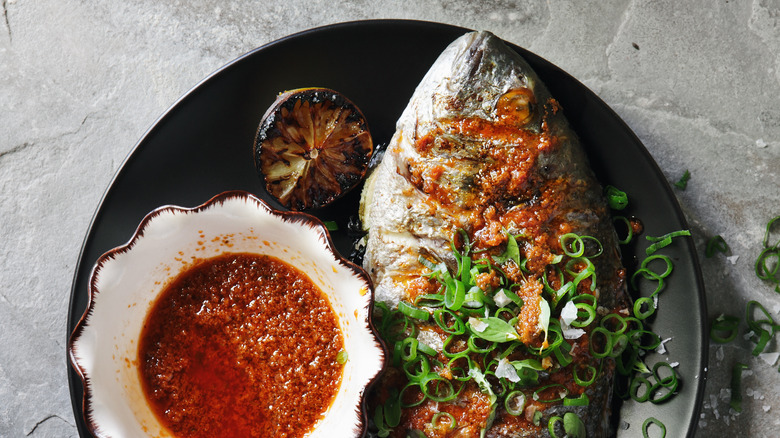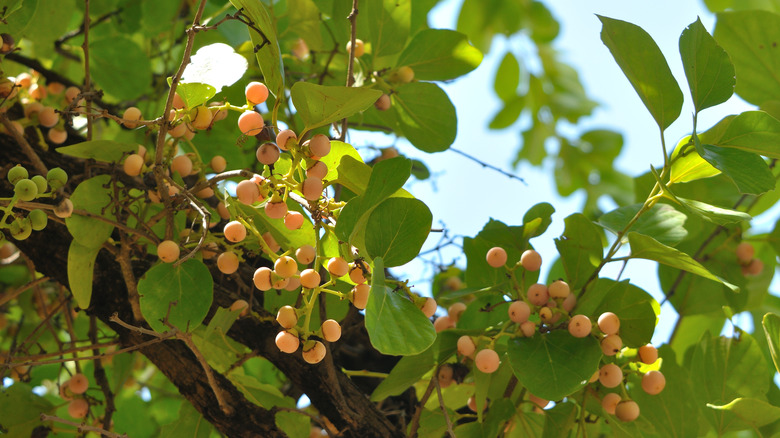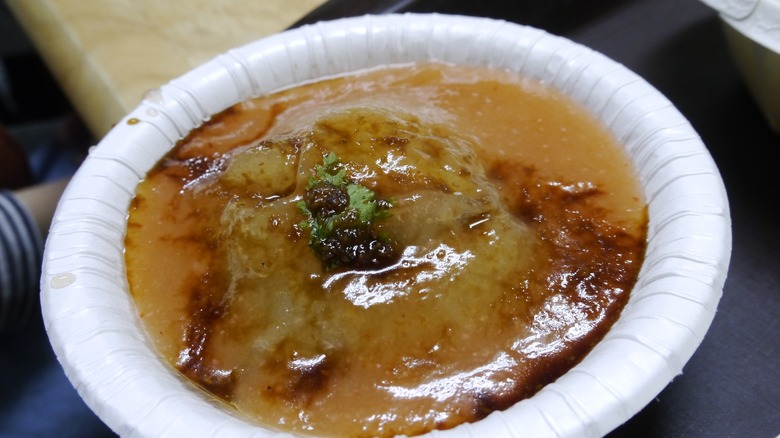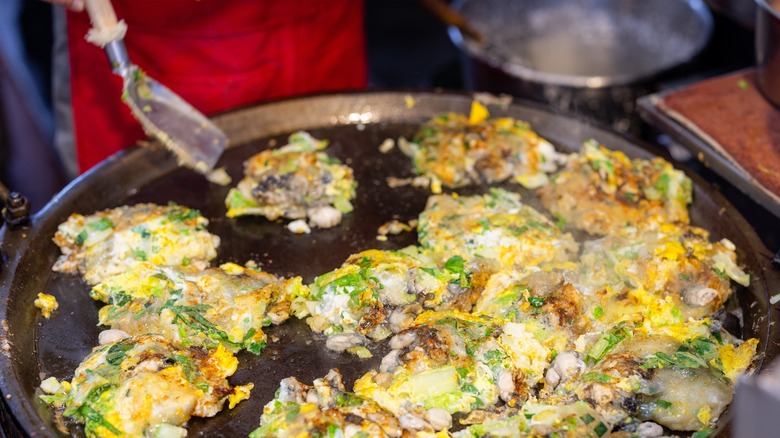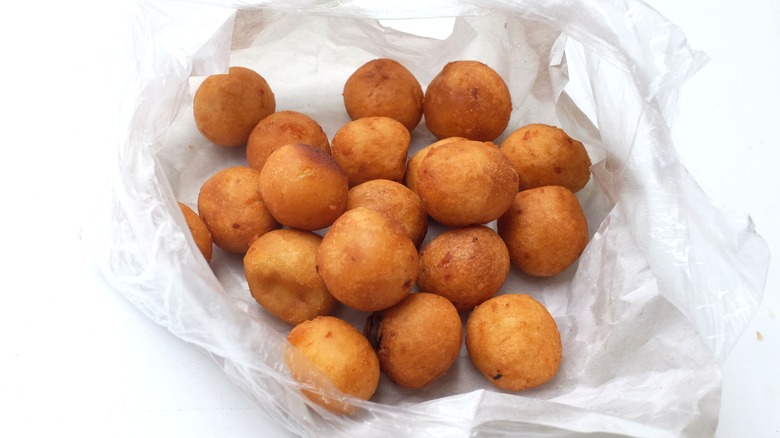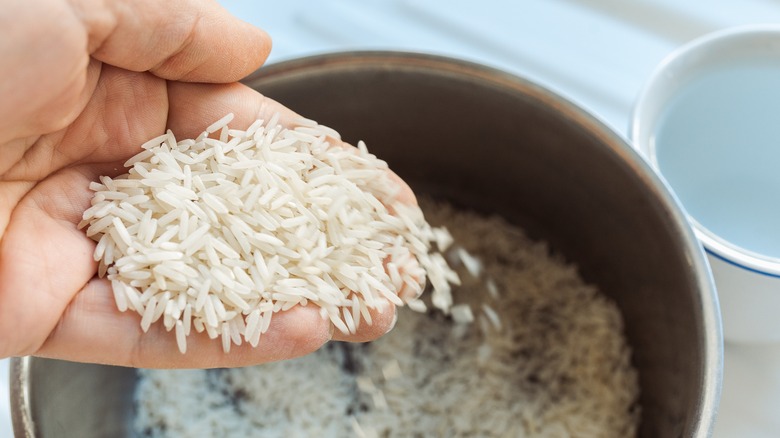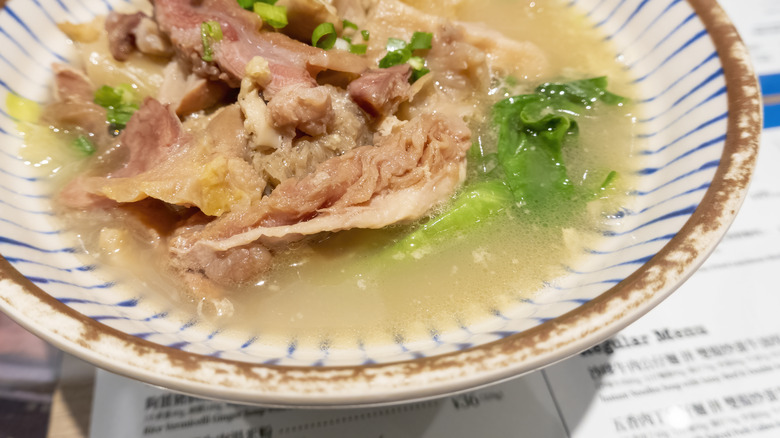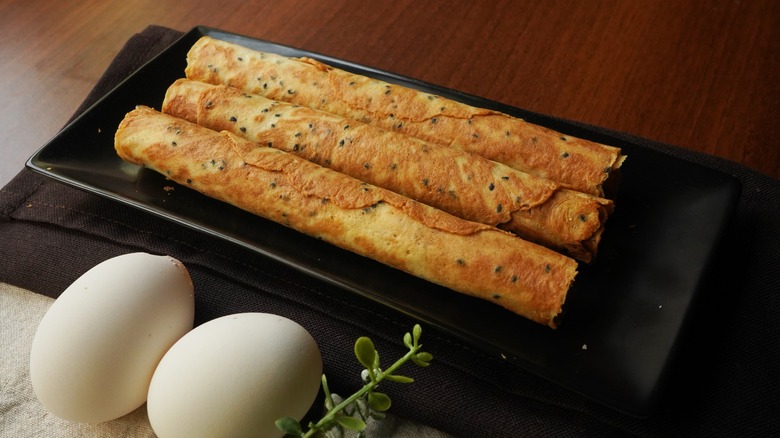12 Essential Taiwanese Dishes To Know, According To A Taiwanese Cook
If you're given to ordering Chinese food on a Friday night but have never tried to make it yourself, you're missing out. Although many Americans are daunted by the idea of making food from other cultures, Chinese food in general (and Taiwanese food specifically) is often simple to prepare, even when it involves lots of steps. Any enthusiastic chef would do well to introduce a taste of Taiwan to their kitchen.
Now, if you're feeling intimidated already, that's only natural. Learning a new cuisine can be challenging, and it does require you understand some new ingredients and techniques. But Taiwan's street-food-heavy food culture is delicious, says Vicki Chen, a Taiwanese native turned American with an inspiring cooking journey who we spoke to. It's also simple once you know what you're doing.
Accordingly, here's a quick look at why you should incorporate more Taiwanese food into your daily recipe roundup. Get ready to learn the most important ingredients, a few essential cooking skills, and some of the best recipes (plus a bonus) to try today.
Taiwan: An eater's paradise
While many of us associate "Chinese food" with traditional Chinese dishes such as chow mein and lo mein, dim sum, or century eggs, the idea that you can lump all of China into one category is faintly ludicrous. Indeed, polls show that a growing number of Taiwanese do not think of themselves as Chinese, but rather as separate people. Taiwan does have a heavy mainland influence, but it carries many of its own traditions, some of them from the time of Japanese colonization, from 1895 to 1945, some from long before. The island is larger than people think, about the size of the Netherlands, or a little bigger than Maryland. Which is to say, there's a lot of food to choose from.
This is reflected in their food traditions, Vicki Chen explains. Taiwan not only has its own take on many Chinese dishes, it has a vast collection of inherited foodways. Add to that a bumping market scene that puts your local food cart pod to shame, and you have a rough idea of what it's like to dine in Taiwan.
It doesn't hurt that food is available night or day: "In Taiwan, you can buy anything at any time," says Chen. She grew up dining at street stalls for dinner, often late at night. Although her mother did cook sometimes, this is her strongest food memory from her school years, and it later influenced her own cooking journey.
Beef noodle soup
So on which dishes does Vicki Chen rely most often? Beef noodle soup is at the top of the list, both a household favorite and the most well-known Taiwanese dish, she says. Happily, it's not hard at all to recreate it at home.
First, you braise the beef, then you cook it with soy sauce, spicy bean paste, rock sugar, white pepper, and water. But there's one secret some home cooks miss: boiled water. This is how you build major depth, Chen says, because the water draws out the beef flavors and also makes it cook faster. Serve with noodles and veggies of choice.
Note: Some recipes for beef noodle soup may call for monosodium glutamate (MSG). Obviously, you are free to use it or not, but it is important to note that the campaign against MSG as a carcinogen is a food myth, and there is no evidence linking it to cancer. Moreover, the connection has strong racist and xenophobic undertones, so at the very least you should do your research and avoid perpetuating the erroneous idea.
Taiwanese fried chicken
Everybody loves fried chicken, right? But this recipe takes things to the next level: "The difference with Taiwanese fried chicken is that it's made with cornstarch and sweet potato starch, so it's actually gluten-free," says Vicki Chen. This makes for a light and crispy outer coating, especially if you follow her tip and first dip the marinated chicken in egg and then the flour mixture, waiting for the latter to become wet before you deep-fry it.
As for that marinade? Opt for a typical Taiwanese flavor palette: black vinegar, sugar, white pepper, soy sauce, ginger, garlic, and green onion. "Some people also put fermented tofu into the marinade," Chen says. "People never know I do that, but it adds a lot of good flavor." Lastly, when you fry the chicken, make sure to pop some Thai basil leaves into the oil along with it for extra herby flavor.
Beef in oyster sauce
If you're a fan of beef noodle soup, above, then beef in oyster sauce is likely for you as well. Instead of going straight to the sauté phase, however, you first remove the beef from the braising liquid and chop it into smaller pieces before adding the ginger and garlic and cooking. Then you sauté, along with soy sauce, white pepper, and the eponymously named oyster sauce.
The secret to really good beef in oyster sauce is a nice thick liquid that will soak into rice when you serve it. To accomplish this, you stir cornstarch into the sauce mixture, but you have to do it at the right time. Once you're finished sautéing the beef, add a little bit of the braising liquid, then wait for it to come to a boil before adding the sauce with cornstarch mixed in. You can also add the sauce ingredients, then mix cornstarch with water and drizzle it in right before you finish and add the beef; it varies by recipe. And, Vicki Chen adds, you can always add chili pepper to anything to make it spicy.
Boiled poultry
Many European culinary traditions prefer broiling, roasting, pan-frying, or braising over boiling meat, but that's not the case at all in Taiwan and other Asian countries. Duck, chicken, and goose are all popular and delicious boiled, and they're readily available throughout the country.
"In the market, it's very common to get boiled goose," Vicki Chen explains. "Parents will buy it to feed their families, ordering them by amounts: a quarter, a half, or a whole. You get garlic soy sauce to dip the goose, along with young ginger slices. Chicken and duck are also good." She likes to eat the tasty and tender skin along with the meat.
Despite its market heritage, boiled goose is easy to make at home, even if it does taste a bit different from in Taiwan, Chen says. Simply put water in a pot with rice wine, ginger, garlic, and green onions. When the water is boiling, put in the goose and boil for 10 minutes. Leave it in for about 15 minutes, then leave it to hang."
Sweet potato leaves in garlic sauce
Some dishes were invented to use cheap and readily available ingredients but have become favorites over time. Think stone soup, a staple in many households. Another example is coq au vin, a French dish originally invented to use up old, tough, inexpensive roosters by braising them for long periods in wine.
One of Vicki Chen's favorite dishes, sweet potato leaves in garlic sauce, was inspired by similar motivations: "When my mom was young, she didn't have a lot of money, and they would eat sweet potato leaves, even though they were commonly used to feed pigs," says Chen. "But she always made it, and I love it. Elevated food is not comforting food for me, it's this food."
To make her favorite vegetables, she explains that all you have to do is take sweet potato leaves and fry them in oil and garlic. Additional seasonings round out and moisten the dish: typically oyster sauce, salt, sugar, white pepper, and water. If you can't find sweet potato leaves, try searching under yam leaves or sprouts.
Pan-seared fish
Another of the most popular Taiwanese dishes is pan-seared fish, a dish Vicki Chen's mother made a lot. The hardest part of this meal may be getting a whole specimen from your fishmonger. Usually, you want to look for sea bass or tilapia. If you can find it, go for silver pomfret, which she explains "is a delicate fish that symbolizes a grateful heart and is local to Taiwan. In general, we eat a lot of white fish in my home country, and whole fish is a very common dish for Chinese New Year."
When serving it for the New Year, it's important to leave the head and the tail intact "so that every year you'll have leftovers," Chen says. "It's all about the presentation of the whole fish, covered with sauce containing garlic and soy sauce." Sometimes the sauce contains ketchup as well; you'll know if it looks red. To serve this dish, sear both sides of the fish in a hot pan and make sure nothing gets broken, because that's bad luck.
Steamed cod with preserved cummingcordia
If you've never heard of cummingcordia, then you are not alone. This may partially be because it has a somewhat gross reputation from names such as snotty gobbles and glue berry... so let's stick to its more dignified name, shall we?
Because cummingcordia, it turns out, are real good. "Cummingcordia are like capers," Vicki Chen says. "I used to pick them when I was a little girl, and they taste delicious." Also like capers, you have to pickle them to get the true flavor to come out, though you can buy them already pickled in larger Asian grocery stores. It's worth the hunt, according to Chen, because they really make the flavor of the fish come out.
The rest of this dish is easy-peasy. You just boil water, put the fish in, let it steam for seven minutes or so, and then pull it out. Or you can trust your nose, says Chen; as soon as you smell it, it's time to remove it. For a sauce, cook green onions and cummingcordia together in hot oil and then pour them over the fish. "For me, a good dish is all about being able to taste the ingredients," and with so few, this recipe certainly fits the bill.
Taiwanese meatball
If you like bao, you are almost certain to love the Taiwanese meatball, a twist on what Americans or Europeans typically think of as a meatball, i.e. the pan-fried spaghetti accompaniment. This recipe employs a filled, steamed bun along with a sauce that's to die for, Vicki Chen says. It is essentially a dumpling, she explains, a word that includes any starch wrapped around filling.
"This is delicious from the market, and we'd never make it at home in Taiwan because it's so easy to just buy it," Chen says. Unfortunately, Taiwanese meatballs aren't a dime a dozen in other countries, so "you could also make it at home. One of my students makes these for me and they're delicious."
Recipes differ, but most involved rehydrated dried mushrooms (often shiitake). Then you marinate pork, bamboo shoots, and the shiitake mushrooms with salt, white pepper, black pepper, and cooking wine, along with the water you use to soften your mushrooms. Once marinated, you stir fry until cooked. That's the filling. The dough consists of a cornstarch and sweet potato flour blend mixed with hot water, which makes a nice chewy dough. Like any other bao, you then turn pieces of dough into a pouch that you fill with meat and deep-fry. As for the sauce, this varies, but usually relies on chili sauce, sugar, water, and cornstarch, among other ingredients.
Oyster pancakes
If "oyster pancakes" sounds like an unlikely combination, think again. It's quite popular in Taiwan and is really more of an omelet-pancake marriage than a straightforward pancake. To make it, you combine sweet potato and cornstarch (a common combo in that neck of the woods) and mix with water to make a light batter. Then fry your oysters, add veggies, throw in the flour mixture, and add eggs. Fry the whole thing together.
In Taiwan, this dish is traditionally served with a kind of sweetened ketchup sauce and is popular at the night markets. Variations on it have more eggs, leaning toward the omelet formula. Other egg and carb combos include egg rolls (which are different from spring rolls) and Dan Bing, a classic Taiwanese dish with filling wrapped in an egg crepe rather than wheat or rice paper wrappers.
Sweet potato balls
If you've not yet familiarized yourself with the term QQ, then it's time you do so now. It first arose in Taiwan, possibly due to its similarity to the word "chewy," but it is a meaning all its own now: soft with a bite, bouncy and springy and, yes, chewy all at once. It is a meaning perfectly exemplified in sweet potato balls, largely due to their high starch content, which gives them similar properties to bao and sesame balls (though Vicki Chen points out that the sweet potato version is sweeter).
To make them, you steam your sweet potatoes and then add sweet potato starch, "which is a very Taiwanese thing to do," Chen says, referring again to the starch addition. Then, she instructs, you must "make it into a dough, form it into a long rectangle, cut into pieces, and roll them into balls." You then cook them in oil on low heat, pushing them under until they cook all the way through. Fun fact: They will come out hollow if you've done it right.
Tinned sticky rice
Tinned sticky rice is a Taiwanese favorite, but you may have to get a little creative to make it at home. The street food versions come in disposable metal containers, so you could ramekins in your kitchen. Alternatively, you could make like Cantonese folks and wrap your sticky rice in bamboo leaves, which you can buy fresh and dried online or find at an import store. Container aside, there are a few other differences between Taiwanese sticky rice and that from other parts of the world.
"The difference between how we make sticky rice in Taiwan versus Cantonese sticky rice is we always use dried mushroom and dried shrimp," along with meat, Vicki Chen explains. "First you cook your meat and mix everything together, but you need to use both short-grain and long-grain rice." Another hot tip that differs from many other rice recipes: Make sure to soak the rice for 2 hours before you cook it, Chen says, which will prevent the center of your rice from coming out hard. Also, you should always use 1 cup of rice to .7 cups of water; otherwise it will become porridge.
Once it's mixed, you put the mixture in a tin (or other container) and steam it. "When you're ready to serve, you can upend it and it will be on top," she concludes.
Fried pork soup
Soup is very common in Asian households, Vicki Chen says, explaining that a meal typically has four courses: soup, meat, vegetables, and egg. Since you're always going to need one, most Taiwanese families have quite a few soup options on hand, though they share some communal properties.
"The broth of any soup in Taiwan is usually going to be clear," she explains. "We don't have chowder. We like to keep it light, as we don't drink water during the meal, so clear broth is important." To keep it so, this soup calls for many of the same steps as beef noodle soup, as well as the same seasonings in the marinade as fried chicken. Instead of just frying, though, you first fry and then steam pork. Then add hot water to the resulting broth, along with seasonings and whatever vegetables you like, bok choy being common.
The best Taiwanese snacks to put on your radar
In the end, Taiwan is a destination any foodie should consider. In addition to their delicious street food and traditional cuisine, the country also boasts world-class Costco food courts (chili cheese fries, anyone?). If you're pining for Taiwanese food, but don't have the money to book a ticket and hit up a street stall, there are some seriously delicious Taiwanese snacks and desserts to know about. While most people wouldn't make these at home, you can still get them online.
First and foremost, it's imperative to mention the sesame egg roll cookies to which Vicki Chen introduced this writer. Seriously, love at first bite. Other popular snacks include milk puffs (a kind of filled, airy cookie), wafers, rice puffs (similar to Rice Krispies), and instant noodles of all ilk. You can also get chips flavored like some of the most popular dishes, such as oyster omelet.
